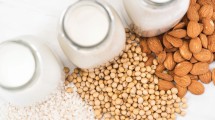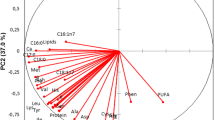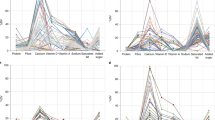Abstract
Background Consumption of plant-based milk in the UK is increasing at the expense of cow's milk. Cow's milk consumption has traditionally been advocated by the dental profession as 'good for teeth'.
Aims To identify the range of plant-based milks available in the UK and compare their nutritional benefits with cow's milk. A secondary aim was to explore reasons behind the increase in popularity of plant-based milks and discuss dental relevance.
Methods Branded plant-based milks available in UK supermarkets were identified and nutritional data collected. Data were obtained from product labelling and manufacturer websites. The sample was collected in December 2019.
Results Eighty-two products were identified. Differences were observed between plant-based and cow's milk, in particular regarding calcium, iodine, vitamin B12 and sugar content. Sugar content varied from 0-7.6 g/100 ml.
Conclusions Dairy is a key source of dietary iodine and many plant-based milks contain much lower levels. Many plant-based milks contain free sugars which are cariogenic. Dentists should be aware of this emerging market and be able to advise patients accordingly.
This is a preview of subscription content, access via your institution
Access options
Subscribe to this journal
Receive 24 print issues and online access
$259.00 per year
only $10.79 per issue
Buy this article
- Purchase on Springer Link
- Instant access to full article PDF
Prices may be subject to local taxes which are calculated during checkout
Similar content being viewed by others
References
Mintel. Milking the vegan trend: A quarter (23%) of Brits used plant based milk. 2019. Available at https://www.mintel.com/press-centre/food-and-drink/milking-the-vegan-trend-a-quarter-23-of-brits-use-plant-based-milk (accessed August 2020).
Alpro. Is veganism the latest fad or here to stay? 2019. Available at https://www.alpro.com/healthprofessional/uk/updates/2019/01/is-veganism-the-latest-fad-or-here-to-stay (accessed August 2020).
National Farmers' Union. The Future of Food 2040. 2019. Available at https://www.nfuonline.com/nfu-online/news/the-future-of-food-2040/ (accessed August 2020).
Flom J D, Sicherer S H. Epidemiology of Cow's milk allergy. Nutrients 2019; 11: 1051.
Misselwitz B, Butter M, Verbeke K, Fox M R. Update on lactose malabsorption and intolerance: pathogenesis, diagnosis and clinical management. Gut 2019; 68: 2080-2091.
Venter C, Brown T, Meyer R et al. Better recognition, diagnosis and management of nonIgEmediated cow's milk allergy in infancy: iMAP-an international interpretation of the MAP (Milk Allergy in Primary Care) guideline. Clin Transl Allergy 2017; 7: 26.
Joint Formulary Committee. British National Formulary. Available online at https://www.pharmpress.com/product/MC_BNF/british-national-formulary (accessed August 2020).
Bridge G, Lomazzi M, Bedi R. A cross-country exploratory study to investigate the labelling, energy, carbohydrate and sugar content of formula milk products marketed for infants. Br Dent J 2020; 228: 198-212.
Baker G, Meyer R, Reeves L. Food fact sheet: suitable milks for children with cow's milk allergy. 2017. Available at https://www.bda.uk.com/uploads/assets/434eb7ee-86c9-436f-a4011b1c88a781dd/Cows-Milk-Allergy-Children-food-fact-sheet.pdf (accessed August 2020).
Public Health England. SACN report on Feeding in the First Year of Life. 2018. Available online at https://www.gov.uk/government/publications/feeding-in-the-first-year-of-life-sacn-report (accessed August 2020).
Food Standards Agency. Arsenic in rice. 2018. Available at https://www.food.gov.uk/safety-hygiene/arsenic-in-rice (accessed August 2020).
Alpro. Available online at https://www.alpro.com/uk/products/drinks/ (accessed August 2020).
Blue Diamond Almonds. Almond Breeze. Available online at https://www.bluediamondalmonds.co.uk/our-products/ (accessed August 2020).
Rude Health. Available online at https://rudehealth.com/product-category/drinks (accessed August 2020).
Innocent. Dairy free range. Available online at https://www.innocentdrinks.co.uk/things-we-make/dairy-free-range (accessed August 2020).
Mighty Pea. Available online at https://mightypea.co.uk/ (accessed August 2020).
Oatly. Available online at https://www.oatly.com/uk/products (accessed August 2020).
Dairy UK. Nutritious Dairy. Available at https://www.milk.co.uk/nutritious-dairy/ (accessed August 2020).
Scientific Advisory Committee on Nutrition. Carbohydrates and Health. 2015. Available at https://assets.publishing.service.gov.uk/government/uploads/system/uploads/attachment_data/file/445503/SACN_Carbohydrates_and_Health.pdf (accessed August 2020).
Levine R S. Milk, flavoured milk products and caries. Br Dent J 2001; 191: 20.
Moynihan P. Foods and dietary factors that prevent dental caries. Quintessence Int 2007; 38: 320-324.
World Health Organisation. Guideline: sugars intake for adults and children. 2015. Available at https://apps.who.int/iris/bitstream/handle/10665/149782/9789241549028_eng.pdf (accessed August 2020).
Coca-Cola. FAQ - Ingredients. Available online at https://www.coca-cola.co.uk/our-business/faqs (accessed August 2020).
Micha R, Penalvo J L, Cudhea F, Imamura F, Rehm C D, Mozaffarian D. Association Between Dietary Factors and Mortality From Heart Disease, Stroke, and Type 2 Diabetes in the United States. JAMA 2017; 317: 912-924.
Vanderpump M P, Lazarus J H, Smyth P P et al. Iodine status of UK schoolgirls: a cross-sectional survey. Lancet 2011; 377: 2007-2012.
Vanderpump M. Thyroid and iodine nutritional status: a UK perspective. Clin Med (Lond) 2014; DOI: 10.7861/clinmedicine.14-6-s7.
Bath S C, Hill S, Infante H G, Elghul S, Nezianya C J, Rayman M P. Iodine concentration of milk-alternative drinks available in the UK in comparison with cows' milk. Br J Nutr 2017; 118: 525-532.
Stevenson M, Drake C, Givens I. Further studies on the iodine concentration of conventional, organic, and UHT semi-skimmed milk at retail in the UK. Food Chem 2018; 239: 551-555.
Department of Health. Dietary reference values for food energy and nutrients for the United Kingdom. 1991. Available at https://assets.publishing.service.gov.uk/government/uploads/system/uploads/attachment_data/file/743786/Dietary_Reference_Values_for_Food_Energy_and_Nutrients_for_the_United_Kingdom__1991_.pdf (accessed August 2020).
World Health Organisation. Assessment of iodine deficiency disorders and monitoring their elimination. 2007. Available online at https://www.who.int/nutrition/publications/micronutrients/iodine_deficiency/9789241595827/en/ (accessed August 2020).
Varela-Lopez A, Giampieri F, Bullon P, Battino M, Quiles J L. A Systematic Review on the Implication of Minerals in the Onset, Severity and Treatment of Periodontal Disease. Molecules 2016; 21: 1183.
Jontell M, Linde A. Nutritional aspects on tooth formation. World Rev Nutr Diet 1986; 48: 114-136.
Dashper S G, Saion B N, Stacey M A et al. Acidogenic potential of soy and bovine milk beverages. J Dent 2012; 40: 736-741.
Schroth R J, Rabbani R, Loewen G, Moffatt M E. Vitamin D, Dental Caries in Children. J Dent Res 2016; 95: 173-179.
Kuhnisch J, Thiering E, Kratzsch J, Heinrich-Weltzien R, Hickel R, Heinrich J. Elevated serum 25(OH)-vitamin D levels are negatively correlated with molar-incisor hypomineralization. J Dent Res 2015; 94: 381-387.
Davey G K, Spencer E A, Appleby P N, Allen N E, Knox K H, Key T J. EPIC-Oxford: lifestyle characteristics and nutrient intakes in a cohort of 33,883 meat-eaters and 31,546 non meat-eaters in the UK. Public Health Nutr 2003; 6: 259-269.
Poore J, Nemecek T. Reducing food's environmental impacts through producers and consumers. Science 2018; 360: 987-992.
House of Commons Library. UK Dairy Industry Statistics. 2016. Available online at https://commonslibrary.parliament.uk/research-briefings/sn02721/ (accessed August 2020).
Sethi S, Tyagi S K, Anurag R K. Plant-based milk alternatives an emerging segment of functional beverages: a review. J Food Sci Technol 2016; 53: 3408-3423.
Rietjens I M C M, Louisse J, Beekmann K. The potential health effects of dietary phytoestrogens. Br J Pharmacol 2017; 174: 1263-1280.
World Health Organisation. IARC Monographs Volume 112: evaluation of five organophosphate insecticides and herbicides. 2015. Available at https://www.iarc.fr/wp-content/uploads/2018/07/MonographVolume112-1.pdf (accessed August 2020).
European Food Safety Authority (EFSA). Conclusion on the peer review of the pesticide risk assessment of the active substance glyphosate. EFSA J 2015; DOI: 10.2903/j.efsa.2015.4302.
Author information
Authors and Affiliations
Corresponding author
Rights and permissions
About this article
Cite this article
Sumner, O., Burbridge, L. Plant-based milks: the dental perspective. Br Dent J (2020). https://doi.org/10.1038/s41415-020-2058-9
Received:
Published:
DOI: https://doi.org/10.1038/s41415-020-2058-9
This article is cited by
-
Just plain milk?
British Dental Journal (2021)



